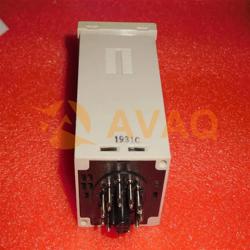Questo sito web utilizza i cookie. Utilizzando questo sito, acconsenti all'utilizzo dei cookie. Per ulteriori informazioni, dai un'occhiata al nostro
Privacy Policy.

Sensori di prossimità
Proximity sensors are devices that detect the presence or absence of objects within their proximity without physical contact. They work based on various principles, such as electromagnetic, capacitive, inductive, or optical sensing, to detect objects in their vicinity. A proximity sensor often emits an electromagnetic field or a beam of electromagnetic radiation (infrared, for instance), and looks for changes in the field or a proximity sensor adjusted to a very short range is often used as a touch switch.return signal. Proximity Sensors are available at Avaq Semiconductor Co., Limited. Avaq offers inventory, pricing, datasheets PDF for Proximity Sensors.
Tipi di Sensori
- Sensori audio
- Sensori di livello del liquido
- Sensori di prossimità
- Sensori tattili capacitivi
- Sensori magnetici
- Sensori di corrente
- Sensori di movimento e posizione
- Sensori ottici
- Sensori ambientali
- Sensori di temperatura
- Sensori di pressione
- Sensori di spostamento lineare
- Sensori biometrici
- Hardware e accessori per sensori
- Sensori di vibrazione e inclinazione
- Sensori di flusso
Immagine e modelli
Descrizione
RoHS
Scheda dati
Stato del ciclo di vita
Quantità
Operazione

E2CA-AN4F
Omron Automation and Safety
Proximity Sensors AC AMP. FOR E2 CA-X10A
Obsolete
In magazzino: 6392 PCS
Minimo:1
![favicon favicon]() FAQ
FAQ
- What are Proximity Sensors?
- Proximity sensors are devices that detect the presence or absence of an object within a certain range or distance without physical contact. They can sense the object's presence, distance, or position using various technologies.
- What are the main types of Proximity Sensors?
- Inductive Proximity Sensors: Detect metal objects by generating an electromagnetic field. Capacitive Proximity Sensors: Detect objects based on changes in capacitance. Ultrasonic Proximity Sensors: Use ultrasonic waves to detect objects' positions. Optical Proximity Sensors: Use light beams to sense object presence. Hall Effect Sensors: Detect magnetic fields produced by nearby objects.
- How do I choose the right Proximity Sensor for my application?
- Consider factors like detection range, object type, material, environmental conditions, output type (digital or analog), and compatibility with the application. Consult datasheets and manufacturer resources for guidance.



















